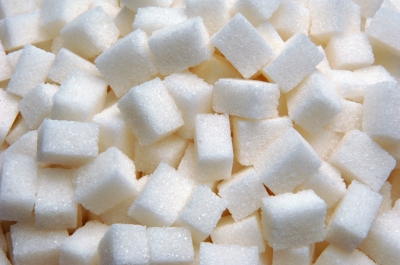Weight Loss – Are low carb diets affecting your brain function?
Some studies are being conducted evaluating the effects of low carb diets, such as the Atkins diet, on cognitive ability. Brain function on a low carb diet may be impaired because glucose is the nutrient used by the brain for energy and the brain is not capable of storing glucose, but is depended on the bodies production of this nutrient.
Many low carb diets restrict intake to as little as 20 grams per day, while the RDA for carbs is at least 130 grams (taking into account the brains energy needs).
One study compared long and short term memory, spatial memory, and visual attention of women prior to beginning a low carb diet, post low carb diet, and after reintroduction of carbs. Those following a low carb diet had a gradual decline in memory performance and slower reaction time on all tests. Interestingly, attention span was improved on the low carb diet.
Fortunately, memory skills and scores returned to normal after carbohydrates were reintroduced.
All the best,
Lisa Nelson RD
Be Heart Healthy and Lose Weight
Weight Loss – Have you tried Stevia, the new zero-calorie sweetener?

Stevia has been approved by the FDA (U.S. Food and Drug Administration) as “generally recognized as safe”, meaning it can be marketed as a dietary supplement and added to food and drink products.
Stevia is using the label “natural” since it’s derived from the leaf of the stevia plant. This may be hard to accept due to the “bad rap” many artificial sweeteners have. Currently there are 5 artificial sweeteners approved by the FDA – aspartame (Nutrasweet, Equal), saccharin (Sweet’N Low), acesulfame-K (Sunett, Sweet One), neotame (made by NutraSweet), and sucralose (Splenda). Even though these sweeteners have received FDA approval, many question the safety and research studies are ongoing.
On the plus side for Stevia, it actually comes from a plant versus a lab. Stevia is a highly refined part of the plant called rebiana or Reb-A. This is the sweetest, purest part of the plant. A company out of Malaysia, PureCircle, claims to be the world’s largest supplier of Reb-A and has worked with a Swiss company to make the bitter, licorice flavor more palatable.
Regardless, we’ll soon be presented with many products containing Stevia in the near future. PepsiCo and Coca-Cola are launching new lines of stevia sweetened products along with producers of other food products, including baked goods and breakfast cereals.
All the best,
Lisa Nelson RD
How to Lower Cholesterol in 8 Simple Steps
Image courtesy of Suat Eman at FreeDigitalPhotos.net
2009 Essential Wellness Telesummit – Be Happy, Healthy, and Wealthy
Liz Copeland has brought together leading international experts and authors in the fields of health, happiness, and life enrichment to bring you the 2009 Wellness Telesummit! Join us to learn about essential wellness!
Join Liz and three other experts for a FREE 4-day Telesummit to guide you to:
- forgiving the unforgiveable to gain perfect freedom
- shedding the inner and outer clutter – so you can have love, health and financial abundance
- be heart healthy and live long
- overcoming the number one diet-sabotage habit so you can be the shape of your dreams
The Telesummit begins Monday, April 20, 2009.
All the best,
Lisa Nelson RD
Be Heart Healthy and Lose Weight
High Fiber Diet Plan to Lower Cholesterol and Lose Weight

Do you have high cholesterol? Increase your fiber!
Do you have high blood pressure? Increase your fiber!
Are you overweight? Increase your fiber!
What is it with fiber (also known as roughage)? It seems to play a role in just about all our health problems. Well, as far as blood pressure and cholesterol go, dietary fiber binds to cholesterol in circulation and helps remove it from the body. Research has shown that for every 1-2 grams of daily soluble fiber intake, LDL (bad) cholesterol is lowered 1%.
On the weight control side of things, a high fiber diet plan increases satiety (how full you feel), aiding efforts to lose weight and/or maintain a healthy weight.
4 Things You Need to Know to Use Dietary Fiber to Lower Cholesterol:
1. There are two types of fiber.
Fiber Insoluble
Insoluble fiber remains relatively intact as it passes through the digestive system. The primary function of insoluble fiber is to move waste through the intestines and maintain intestinal acid balance.
Fiber Soluble
Soluble fiber is the type of fiber responsible for lowering total cholesterol and LDL (bad) cholesterol levels.
2. Sources of insoluble fiber
Fruit skins and root vegetable skins
Vegetables (green beans, celery, cauliflower, zucchini, beets, turnips, potato skins, and dark green leafy vegetables)
Wheat and whole-wheat products
Wheat oats
Corn bran
Seeds and nuts
3. Sources of soluble fiber
Oat and oat bran
Legumes (dried beans and peas)
Nuts
Barley, rye
Flaxseed
Fruits (i.e. oranges, apples, prunes, plums, berries)
Vegetables (i.e. carrots, broccoli, potatoes, sweet potatoes, onions)
Psyllium husk
Shoot for 25-35 grams of dietary fiber everyday. Of this fiber, soluble fiber should make up 15 grams. The average US dietary fiber intake is 12-18 grams/day.
If your current diet is very low in dietary fiber, don’t increase to 35 grams overnight. A sudden increase will result in gastrointestinal (stomach) distress and unpleasant side effects (flatulence and diarrhea). You want to increase your fiber intake gradually.
Bottom Line:
Select high fiber foods, especially foods that contain soluble fiber. I once heard a gastroenterologist say he would be out of a job if everyone just ate more beans!
February is American Heart Month. In recognition of American Heart Month you can access Heart Health Made Easy at a 25% savings. Learn more about this take action guide to lower cholesterol and blood pressure at http://www.hearthealthmadeeasy.com.
All the best,
Lisa Nelson RD
Reduce Heart Failure with Weight Loss and Activity
 The Physician’s Heart Study followed over 21,000 between the ages of 40 and 84 for over 20 years. They found a significant link between weight, activity, and heart failure I want to share with you.
The Physician’s Heart Study followed over 21,000 between the ages of 40 and 84 for over 20 years. They found a significant link between weight, activity, and heart failure I want to share with you.
Both weight and physical activity were independently linked to risk of heart failure.
Weight
Having a high BMI increased heart failure risk in both active and sedentary men. For every additional 7 pounds on a man 5 foot 10 inches tall, risk for heart failure increased 11%.
Physical Activity
Vigorous physical activity reduced heart failure risk in lean, overweight, and obese men. Men that exercised vigorously only 1-3 times a month reduced their heart failure risk 18%. The more frequent and vigorous the exercise the greater the benefit. Very active men, exercising vigorously 5-7 days per week reduced heart failure risk 36%.
The combined risk of obesity and physical activity is substantial. When compared to lean men who were vigorously active 1-3 each month risk of heart failure increased 19% for men that were lean (BMI less than 25), but inactive, 49% in overweight active men, 78% in overweight inactive men, 168% in obese active men, and 293% in obese inactive men.
Key point I want you to take from this post:
This study shows a little activity has substantial benefits. By being vigorously active just 1-3 days each month you can cut your risk 18%.
Get moving!
February is American Heart Month. In recognition of American Heart Month you can access Heart Health Made Easy at a 25% savings. Learn more about this take action guide to lower cholesterol and blood pressure at http://www.hearthealthmadeeasy.com.
All the best,
Lisa Nelson RD
Be Heart Healthy and Lose Weight
Weight Loss – How Stress and Cortisol Affect Weight Loss

Do you struggle with extra fat around your midsection? Excess abdominal fat is not only visually unappealing to some, but it increases your heart disease risk.
What causes abdominal obesity?
There are many different reasons your body likes to store fat in the abdomen. I want to discuss one possibility – cortisol.Cortisol is a hormone made by the adrenal glands in the kidney. Cortisol levels are highest in the morning. Through gluconeogeneis (term for glucose production), cortisol breaks down muscle to provide the body with needed glucose for energy needs. Cortisol also relocates fat cell deposits into the visceral cavities of the abdomen.
When we are confronted with stress our body’s initial response is “fight or flight”. When we go into “fight” mode our body releases the hormone norepinephrine. When we respond with “flight” (or anxiety) our body releases epinephrine. If the stressful situation is long term and you begin to feel distressed and defeated, the hypothalamus in the brain becomes involved, eventually leading to the release of cortisol from the adrenal gland in the kidney.
Why is “fight or flight” important to understand?
Your perception of an event can determine your body’s physical response. Do you feel stressed, but challenged by an obstacle or do you feel overwhelmed and out of control? If you feel challenged and “fight” your body responds with an accelerated heart rate that increases the release of fatty acids into circulation. If you feel out of control and defeated (“flight”), the body increases fat formation (lipogenesis), breakdowns tissue (muscle), suppresses the immune system, and increases visceral fat deposits.
What is visceral fat?
Visceral fat is the fat around and between your organs. Subcutaneous fat is the fat layer beneath your skin.
Excess visceral fat leads to the “beer belly” effect (also referred to as the “apple” shape). Visceral fat is connected to insulin resistance and glucose intolerance (linked to diabetes), high cholesterol, high blood pressure, and heart disease.
Are you at risk?
Get out a tape measure.
Wrap the tape measure around your abdomen at the level of your navel (belly button). Make sure the tape measure is level all the way around (you may need extra hands). Resist the temptation to cinch in the tape measure for a lower number, instead hold the tape measure lightly against your skin.
Men – A waist measurement of 40 inches (102 cm) or greater equal’s abdominal obesity.
Women – A waist measurement of 35 inches (88 cm) or greater equal’s abdominal obesity.
How to reduce stress for minimal impact on abdominal fat and heart disease risk?
Stress is a part of living, but you can take steps to reduce your stress levels.
Physical activity, especially aerobic activity, is a great stress management tool. Activity releases the “feel good” hormone serotonin to help combat the negative effects of long term stress. As an added bonus, you burn calories to shed the extra layer of fat.
p>Additional interventions to reduce stress include deep breathing, progressive relaxation, meditation, and visualization. Don’t be afraid to step out of your comfort zone and try something new that may be effective at reducing your stress levels. Getting enough sleep and making healthy food choices are two additional steps to promote stress management.
Be sure to get a copy of the special report Stop Wasting Money – Take Control of Your Health to start on the path to heart health and weight loss!



